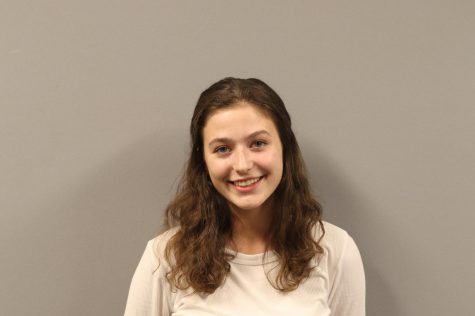The Oldest Students in the Building
Parker teachers enrolling in Upper School Classes
Upper school Spanish teacher Julia Garner’s D period Spanish II section looks a bit different from her E period section — sitting in the back of the room upper school performing arts teacher and department chair Leslie Holland-Pryor is listening attentively alongside 15 underclassmen.
Each year, Parker teachers take advantage of the opportunity to participate in language classes alongside students. “Spanish is one of the most spoken languages in the world,” upper school mandarin teacher Min Lee said. “I took Spanish with adults, but I wanted to get better at tenses, so I wanted to take it at Parker with the students.” This opportunity attracts Parker teachers each year, predominantly in Spanish, French, and Mandarin.
Teachers have expressed that taking a language from a colleague is a way to get back into the classroom and take on a new subject that they have been wanting to explore. “It’s important to me that as a citizen of this country, I have a responsibility and do my due diligence that I am able to wear my culture,” Holland Pryor said. “It’s important for me to embrace and to investigate other cultures in my own education. I like seeing how our Parker education functions. I like being in the student headspace. It helps me be more empathic of what students are going through.”
Holland Pryor suggests that all teachers take a class here, as she believes it brings teachers new perspective–exposure to a new teaching style and a sense of what it is like to be a student at Parker.
“It’s super cool that a teacher is able to have the same experience as a sophomore in a class,” sophomore Jenna Ehrhart, who is currently taking Spanish II with Holland Pryor, said. “It’s wonderful!”
Students as well as teachers seize this opportunity to work together “I like seeing the students explore,” Holland Pryor said. “The exploration and the discovery of their capacity to be another language teacher is fascinating.”
Garner teaches two classes with teachers sitting at desks. “It changes the tone, but it can be a good thing,” Garner said. “Sometimes adults are better at drawing out conversation than the students’ own piers.” Garner added that she doesn’t grade homework and tests done by teachers, but she does correct it.
“I think it makes me appreciate on a deeper level the challenges of learning a new language,” Garner said. “I think it is important everyone learn a second language at some point in their lifetime.”
While students and teachers alike have described this phenomenon in a positive light, some students have mixed opinions about calling a teacher a classmate.
“It’s just kind of awkward,” former Spanish II student and sophomore Fin Gallagher said, “and it feels like it slows the class down.”
Garner said, “I think it’s different for students to interact with teachers, for them.”
Freshman and French I student Michael Watkins, who is in class with Stacy Gibson, wonders about the arrangement. “It’s kind of intimidating,” Watkins said. “I don’t know why she’s there.”
But one of Holland Pryor’s classmates, freshman Zoe Blickstein, likes the arrangement. “I like that there’s not only students,” Blickstein said. “It’s another teacher to talk to, which is super fun.”







